PARKS AND OPEN SPACES TO THE RESCUE
During the Covid-19 crisis
by TurfPro Editor, Laurence Gale MSC, MBPR
Having the ability to get out and exercise and make use of the valuable green space that is local to us, has been a god send.
I don’t think anybody in the UK could have predicted the recent run of events that have seriously impacted the way we work and live.
Beginning last winter we had severe flooding affecting many parts of the country, followed by this unprecedented Covid-19 virus and now this uninterrupted spell of warm dry weather - that could easily turn into a drought?!
However, this warm spell of warm weather could not have come at a better time, enabling us all to be able to cope much easily with the current crisis. Having the ability to get out and exercise and make use of the valuable green space that is local to us has been a god send.
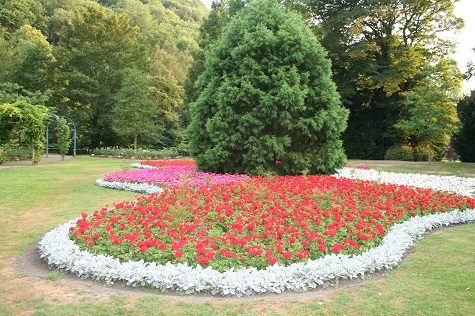
As a current Green Flag judge and ex-parks manager, I am well suited to promote the value of these essential assets. You cannot, in this current climate, put a value on what these amazing public open spaces bring, in helping us cope during this outbreak.
I recently attended, via remote link, a Midland Parks Forum meeting, where over 25 Midlands parks officers were in attendance. The Midlands Parks Forum is a charitable organisation acting as an umbrella for their supporters. These include green space professionals from a wide range of sectors including local authority, voluntary and community sectors from across the East and West Midlands, as well as national agencies.
The organisation puts together conferences, workshops and educational forums, utilising speakers who focus on all aspects of green space management and development. Additionally, they support case studies and facilitate visits to high quality, award winning green spaces to learn about and share good practice.
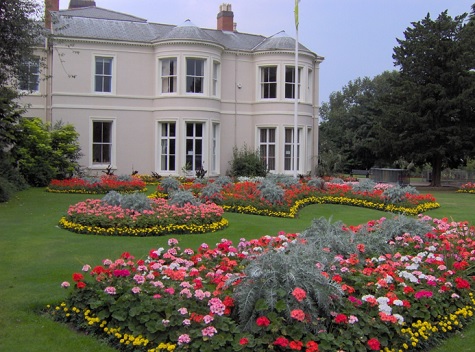
Parks and green spaces in the East and West Midlands are vitally important for exercise and mental wellbeing, but to ensure they stay open for everyone to use, they urge the public to follow the Government’s rules to stop the spread of COVID-19. The following key points were outlined.
The public can take part in one form of exercise a day, for example a run, walk, or cycle - alone or with members of their household. And even when doing this, they should be minimising time spent outside of the home and ensuring they are 2 metres apart from anyone outside of their household.
When using parks or green spaces, it is vital that the public take these steps:
- Do not visit a park if you have any symptoms – fever, coughs, shortness of breath. See NHS guidelines See NHS guidelines if this applies to you.
- Parks should be used for daily exercise or essential travel only. Team sports, social activities (e.g. picnics, playdates etc.) and sunbathing should not be taking place.
- Stay local and use open spaces near to your home – do not travel unnecessarily. If you have a garden, make use of the space for exercise and fresh air. Please consider that people without gardens rely on parks more.
- You should only go outside alone or with members of your own household. Gatherings of more than two in parks or other public spaces have been banned. The Police and local authorities are asking us to follow these guidelines.
- Observe social distancing, staying at least 2 metres apart from other people
- Use all areas of the park that remain open, not just the paths, so you can maintain an appropriate distance from others.
- If the park is crowded, do not enter if you cannot safely stay at a distance from others.
- Avoid touching surfaces (such as gates or hand-rails) and your mouth and face. Please follow Public Health England advice on hygiene and wash your hands as soon as you get home.
- Keep your dog on a lead at all times to ensure you can safely keep 2 meters away from others.
- Pay attention to instructions provided by parks services including any officials on site. Temporary measures have been put in place to safeguard you, such as avoiding benches, surfaces and equipment.
- Do not use areas of the park that have been closed such as play areas, outdoor gyms or sports facilities – these are closed to stop the possible spread of COVID-19 through touching surfaces and keeping a safe distance from others.
Some providers of public parks and green spaces have decided to close some, or all, of their facilities or car parks within their parks. They are best placed to make those difficult decisions based on their understanding of local circumstances.
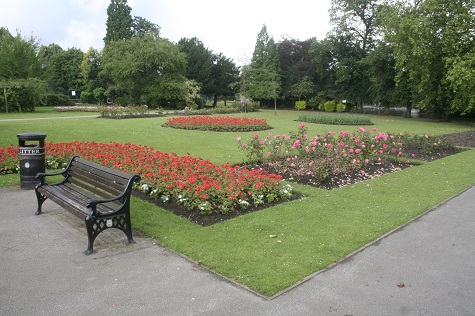
Many other outdoor spaces are still open. But in some spaces, such as canal towpaths for example, it may be difficult to maintain the recommended distance from other users, so please try to avoid these areas and choose places you can exercise safely.
It was interesting to hear the different approaches that councils were taking in dealing with this crisis.
Some had totally shut down all ground maintenance operations, while others were keen to continue with essential grounds services - mostly on a scaled down operation of grass cutting of road verges, and public open spaces.
Many had closed car parks to reduce traffic. Destination parks were closed, again to reduce unnecessary road traffic. Many cemeteries had been closed, but after last week’s government announcement that parks should remain open to the public and cemeteries to reopen for 2 hrs a day, many local authorities were having to re-open these facilities.
Also, many council staff have been re-deployed and are working in other frontline services such as litter and bin collecting, along with delivering goods to care homes and hospitals.
It will be interesting to see in the next few months the outcomes of this terrible crisis. I personally hope that once this is all over, the government will finally realise the importance of public green open space and parks and begin the policy of investing in them as a statutory service. There is an interesting article on this in the New Statesman that talks about the austerity that councils have suffered in the last twenty years and that there may be a glimmer of hope for parks to be seen as essential service?
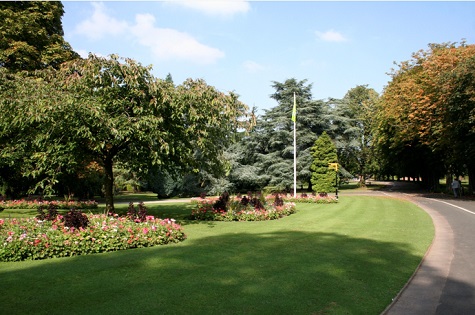
As for the weather, we have had probably the best spell of spring weather for many years, with no real flush of growth due to the cooler ground temperatures that last week finally began to rise into double figures. I see from postings on Twitter, Facebook and LinkedIn, many groundsmen have managed to get on with some essential work and are making the most of this decent weather front.
This warm spell of weather will have also led to the need to irrigate and water your turf. I would hope that you will have had your irrigation systems checked and serviced so that they are ready for use?
Most, if not all, professional sporting facilities have irrigation systems of one sort or another. Without them they would not be able to prepare and maintain their playing surfaces.
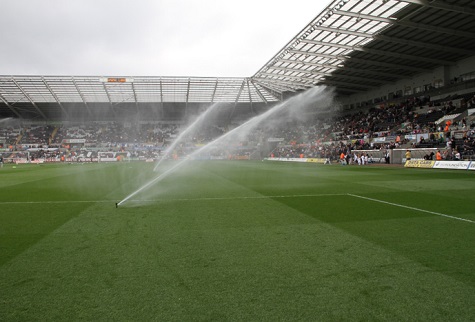
Water is influential in all chemical, physiological and biological processes of plant growth. The soil/plant water relationship is critical to the sustainability of any grass plant. Having an understanding of these relationships is critical. All grass plants are a continuum of water movement. Over 90% of the plant's water requirements are transported through the plant from the soil profile, via the roots and stem tissues into the leaves and out into the atmosphere.
Knowledge of these relationships is important when designing and operating irrigation systems. The main aim is to achieve a water balance within the soil profile ensuring that the grass plant can access available water from the soil.
The best times to water are generally early morning or late evening when temperatures are at their lowest reducing the rate of evaporation.
Finally, just to reiterate, the latest guidelines on working on sports facilities can be seen from the Grounds Managment Association and BIGGA.
 |
|
 |  |
GMA NETWORKING WITH GOVERNMENT AND SPORTS BODIES
To update members on Covid-19 guidelines
This week's WEB ONLY story is Geoff Webb, CEO at the Grounds Management Association has released an updated statement regarding grounds maintenance and safe working.
TORO DONATES $500,000
To global coronavirus relief efforts
Hayter's parent company announced last week that it is giving $500,000 to assist families and communities worldwide that have been impacted by the pandemic.
The Toro Company (parent company of Hayter Limited) announced last week that it is giving $500,000 to assist families and communities worldwide that have been impacted by the COVID-19 pandemic.
Grant funding from the Toro Foundation will span all regions where The Toro Company operates, and will focus on providing food, health and humanitarian assistance to helping people adversely impacted.
“Supporting our customers and communities is an important part of our culture and core to who we are as a company,” said Rick Olson, chairman and chief executive officer of The Toro Company. “Now more than ever, it is critical that we come together to respond to the unprecedented challenges posed by COVID-19 and to support those most vulnerable in our communities.”
The contributions include commitments to several global nonprofits that are assisting in the relief efforts. This includes the American Red Cross and the International Committee of the Red Cross, Feeding America, the World Food Program, the United Way Worldwide, and United Way organisations in communities where The Toro Company’s employees live and work.
An additional element of the global giving effort includes a special program for its employees who wish to personally give to designated COVID-19 relief organisations. Under the program, The Toro Company will match employee contributions to a nonprofit organisation of their choice in support of relief efforts.
 |
|
 |  |
PSD BEGIN CLICK & COLLECT SCHEME
Range of products included
Company say scheme is centred around driving business through their specialist dealer network.
PSD Groundscare have launched a new Click & Collect scheme that they say is centred around driving business through their specialist dealer network.
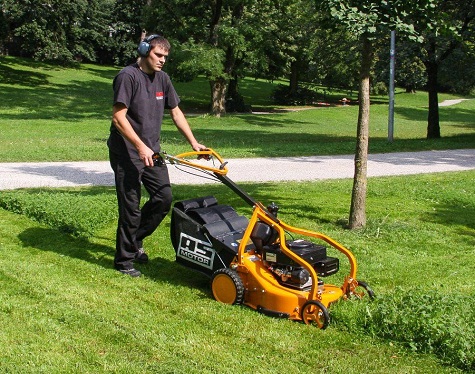
The service includes a range of selected products from Eliet and AS Motor where customers are now able to order their machinery online and collect them, ready to go, from their locally chosen dealer.
The machines are dispatched directly to the dealer for collection by the customer therefore ensuring that the correct product instruction is given whilst, of course, observing safe social distancing rules.
Stuart Mercer, PSD sales director, said, “The new Click & Collect scheme offers support to our dealer network that generates new business for them, which in the current climate is so important. We’ve kept the scheme as simple as possible for both customers and dealers and it is very much about us offering our valued dealer network an additional selling arm”.

FIRST YOUNG GREENKEEPERS EDUCATION DAY
Event held earlier in year
Day was designed to inspire and educate young greenkeepers through a series of interactive sessions, machinery, irrigation and tractor demonstrations and career development advice.
The first Young Greenkeepers Education Day, held earlier this year, was supported by Toro and Reesink Turfcare, who were also two of the sponsors, and organised by Ryan Neale, greenkeeper at Blackwell Golf Club in his role on the BIGGA Young Greenkeeper Committee, Alex Brougham from Trentham Park Golf Club and Danny Patten from Huyton and Prescot Golf Club.
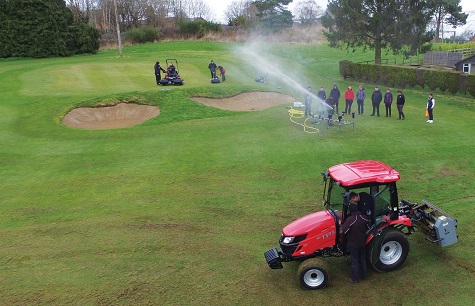
It was designed to inspire and educate young greenkeepers through a series of interactive sessions, machinery, irrigation and tractor demonstrations and career development advice.
Rochelle Bedford, marketing manager at Reesink Turfcare, said, “The initiative of these three young greenkeepers to have come up with the idea for this and to implement it, is really inspiring and it’s a great match for our company ethos to promote and support the future of the industry.”
Ryan says: “The idea developed over a pint of Guinness after a day volunteering at last year’s Open Championship at Royal Portrush. I was with Alex and Danny talking about how great it would be if there was an exclusive event focussed entirely on content specifically for young greenkeepers. We wanted to encourage networking, improving confidence and sharing experiences to help with their own careers.”
The event, held at Blackwell Golf Club in Bromsgrove where Ryan works, was designed for greenkeepers aged between 16 and 30. Volunteering advice and personal development was provided by Ryan, a career development presentation by Alex and an inspirational chat on the 10 minutes that changed his career was led by Danny in relation to his successful application to the 2018 Young Toro Student Greenkeeper of the Year Award. Machinery demonstrations and an irrigation display were conducted by representatives for Toro machinery, Toro irrigation and TYM tractors from Reesink Turfcare.
Ryan continues: “We all also agreed that not many of us get the chance to have a go on the latest equipment and how great it would be to give attendees the chance to see and operate the latest kit. Jon Lewis from Reesink Turfcare put a list together of the latest Toro and TYM machines available to demonstrate and the machinery station consisted of the Toro Outcross with ProCore 1298 aerator, two pedestrian mowers including the new Toro Greensmaster 1021, a Toro Greensmaster eTriFlex series ride-on mower, and two TYM tractors with various attachments. There was an irrigation display and presentation on different heads, set up and maintenance.”
Reesink’s Pete Newton, who was there on behalf of Toro irrigation, says: “The day had a bit of everything in it and worked really well. We broke down the concept of irrigation, explaining how to set valves, open sprinklers, set their arcs and manage basic irrigation problem solving, while also demonstrating some of Toro’s irrigation products.” While Scott Turner representing TYM tractors says: “It was great to meet the faces of greenkeeping for tomorrow, it represents a promising future for the industry, and we were delighted to be involved.”
Ryan concludes: “We are very pleased with how the day went and look forward to planning, and helping others plan, similar events in the future. We were really lucky to have not just such influential players in the industry such as Reesink and Toro, ICL and Syngenta support and sponsor us, but to have such a good turnout of young greenkeepers keen to learn and network. The combination made for an incredibly successful day.”
 |  |
GREENMECH STRENGTHEN COVERAGE IN SOUTH WALES
New dealer appointment
Operating out of five depots across South Wales, Phoenix Hire & Sales Ltd have taken on GreenMech's range of pedestrian, road-tow and tracked chippers.
Strengthening their representation in Wales, GreenMech Ltd have announced the appointment of plant and tool dealers, Phoenix Hire & Sales Ltd.
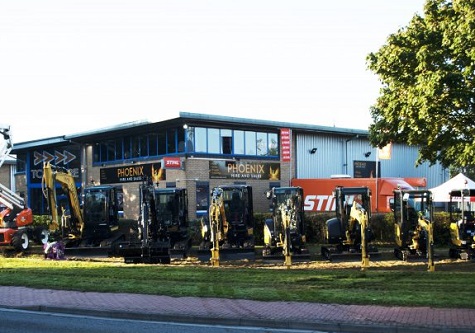
Operating out of five depots across South Wales, the range of pedestrian, road-tow and tracked chippers becomes the latest franchise in their specialist Arb and Grounds division.
Phoenix sales director, Jason Derraven, said, “The GreenMech range complements our plant hire fleet which also means we can now fully support our customers including those in the rail sector, with a complete range of de-veg equipment and woodchippers for hire or sale.”
GreenMech sales director, Martin Lucas added, “We are fortunate to work with a fantastic network of dealers - renowned for providing second-to-none service and support - and Phoenix Hire & Sales becomes the latest addition to that ever-growing list. We look forward to working together with them to share our extensive woodchipper range with the Arb specialists in their area.”
AVANT UK TURNS 21
Celebrated anniversary yesterday
The Norfolk-based subsidiary of Finnish compact loader manufacturer Avant Tecno, celebrated 21 years of service on 23rd April 2020 with some new announcements.
Avant Tecno (UK), the Norfolk-based subsidiary of Finnish compact loader manufacturer Avant Tecno, celebrated 21 years of service yesterday (23rd April 2020) with some new announcements for their UK customers.
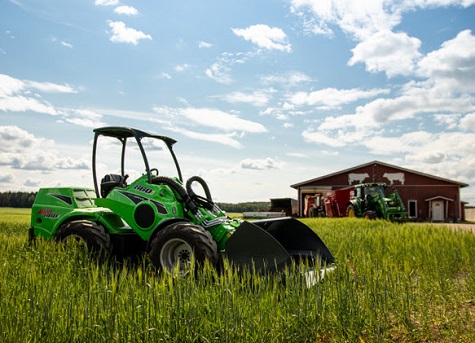
In celebration of their 21st birthday, the company have added their most powerful machine to their 8 series range - the Avant 860i Stage V. The largest of the their loaders, the company says it benefits from a lifting capacity of 1,900 kg, a reach of 3.5m, and a turbocharged Kohler KDI 1903 TCR 42 kW/57 hp diesel engine.
Also in recognition of 21 years of service in the UK, the company are offering their customers a 3 year or 3,000 hour warranty with any new machine purchased in 2020. This also has the option to be extended to a 5-year warranty.
Since its launch in the UK, the Avant team has grown to 9 people and has sold in excess of 5,000 loaders through their network of 16 regional dealers, providing the UK with almost 30 sales points.
Managing director, Raimo Ala-Korpi, said, “We wanted to mark our 21st birthday here in the UK by giving something back to our loyal customer family who have supported Avant over the years."
 |
|
 |  |
ADVERTISE YOUR JOBS HERE
Amazing success rates!
Advertise your recruitment needs on TurfPro Weekly Briefing and reach our targeted audience of recipients every week.
Contact Nikki Harrison for details - 01491 837117
|
 |  |
WIN A TRIP TO LOUISVILLE!
Your chance for you and a guest to attend GIE+EXPO in the USA this October
The Outdoor Power Equipment Institute (OPEI) and TurfPro is giving one lucky turf professional plus their guest, the chance to visit GIE+EXPO, the international landscape, outdoor living, and equipment show in Lousiville, USA, in October 2020.

The Outdoor Power Equipment Institute (OPEI) is giving one lucky reader plus their guest, the chance to visit GIE+EXPO, the international landscape, outdoor living, and equipment show in Louisville, USA, in October 2020.
The winner of this amazing free to enter competition, who must currently work as a turf professional, will win two tickets to the show as well as travel to the US, transfers and accommodation.
SUPPORTED BY

Between the 21st-23rd October, GIE+EXPO will showcase the hottest products and technological innovations in the global outdoor power equipment industry - and you could be immersed in the latest developments plus be able to network with peers from across the world.
Throughout the three days you will be able to visit over 1000 exhibitors across the showfloor. There is even 20 acres of outdoor space for demonstrations and test-driving, so you can put the equipment through its paces.

This really is an incredible opportunity to get away from the business for a few days and to come back with a wealth of new ideas from across the globe.
To enter the competition and for full terms and conditions click here.
 |
|
 |  |
 |  |
 |  |
 |  |
 |  |
THAT WAS THE YEAR THAT WAS
This week: 2001
by Chris Biddle, Turf Pro founder
 |
| Eddie Seaward |
|
This week, Chris Biddle looks back to 2001, a year in which a leading turf professional has been credited by a national newspaper as being a major game-changer and having a significant long-term influence on the future of his sport.
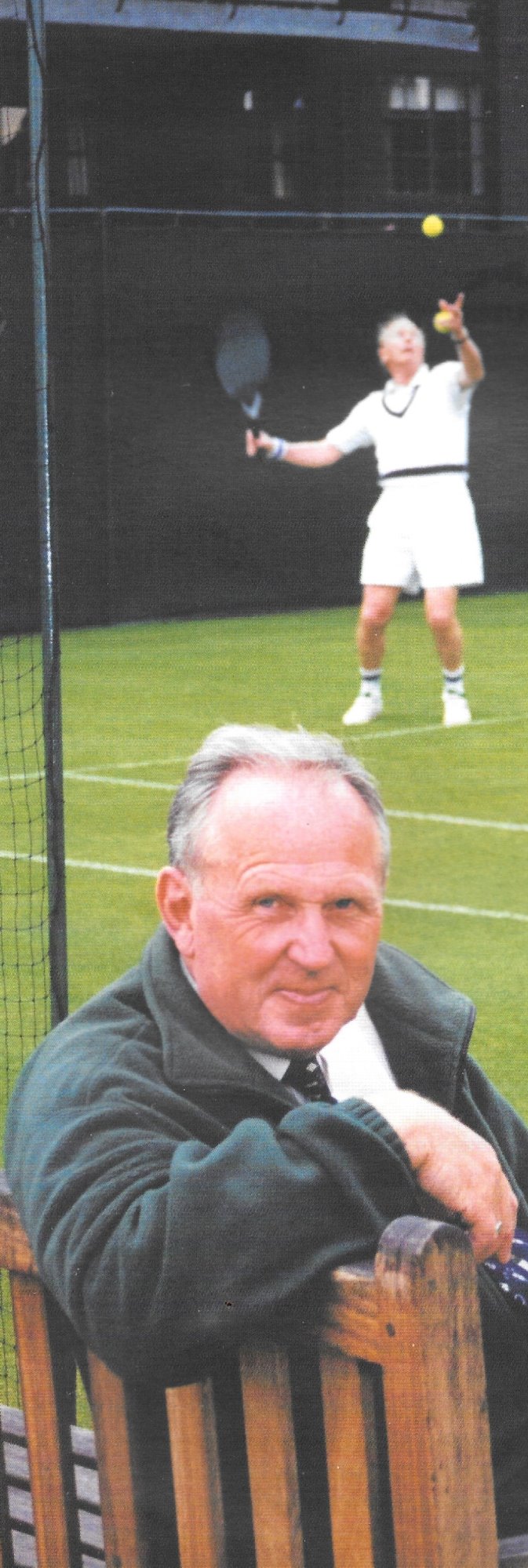 IT is not often that a groundsman is recognised as one of sports game changers, but in a current series in The Times, the name of Eddie Seaward sits alongside the likes of Kevin Pieterson (first switch-hit in a Test Match) and Dick Fosby (originator of the Fosbury Flop high jump technique). IT is not often that a groundsman is recognised as one of sports game changers, but in a current series in The Times, the name of Eddie Seaward sits alongside the likes of Kevin Pieterson (first switch-hit in a Test Match) and Dick Fosby (originator of the Fosbury Flop high jump technique).
In 2001, and after more than 5 years of perceptively changing the grass seed mix at the All England Lawn Tennis Club (AELTC), Eddie and his team moved from using a 70% perennial rye grass and 30% red fescue to using a 100% rye grass mix of AberElf and AberImp.
The move was prompted by a change of wear patterns on the court as a serve and volley game was replaced by more baseline rallies, creating increased wear near the service line. Eddie told TurfPro (June 2001) “The game is changing, and we should never forget that we are producing a playing surface rather than simply growing grass”
During the 1990s when Pete Sampras was at his peak winning six titles with his booming serve, the difference between the speed of the grass surface at Wimbledon and the slow clay of the French Open was chalk and cheese. Many players could not adapt and opted not play in both tournaments.
Whether his new choice of grass was influenced from the top level, it was not clear at the time, but the effect was noticeable straightaway. Tim Henman said in 2002 “In the changeover during a match I became completely frustrated at the new slowness of the court”.
Eddie was however fortunate in that a new breed of players was coming through to exploit the slower surface with a greater degree of fitness and skills. The battles that followed between Roger Federer, Rafael Nadal, Novak Djokovic and Andy Murray upped the entertainment value by several notches – and the game increased in popularity.
Such was the media interest in Eddie’s new grass mix that the Guardian newspaper featured AberElf as its ‘top seed’ in its preview of the Championships in 2001!
It was a moment of inspiration that changed the evolution of sport says The Times. Read the feature here.
Many in the turfcare industry owe much to the late Eddie Seaward. His legacy lives on throughout sport, and for a leading newspaper to recognise him as major game changer is a tribute to Eddie himself and the industry as a whole

OTHER NEWS
In 2001, the UK was in the grip of an epidemic. Foot and mouth paralysed many rural communities between February and September and had a serious impact on agriculture, tourism and sport. In Scotland, a number of golf courses closed where they adjoined farmland. Wales was badly hit with clubs such as Knighton, Cradoc, Brecon and Builth Wells closing for several weeks. In Hampshire, the New Forest Golf Cub closed from February until mid-May and turfcare machinery manufacturers and dealers suffered significantly from a sharp drop off in business.

The first ever Turfcare conference was staged at the Gleneagles Hotel. The three day conference was the brainchild of Jimmy Kidd, (left) director of turfgrass management at Gleneagles and was designed to address issues and practicalities for those wishing to build a new course and improve an existing facilities.
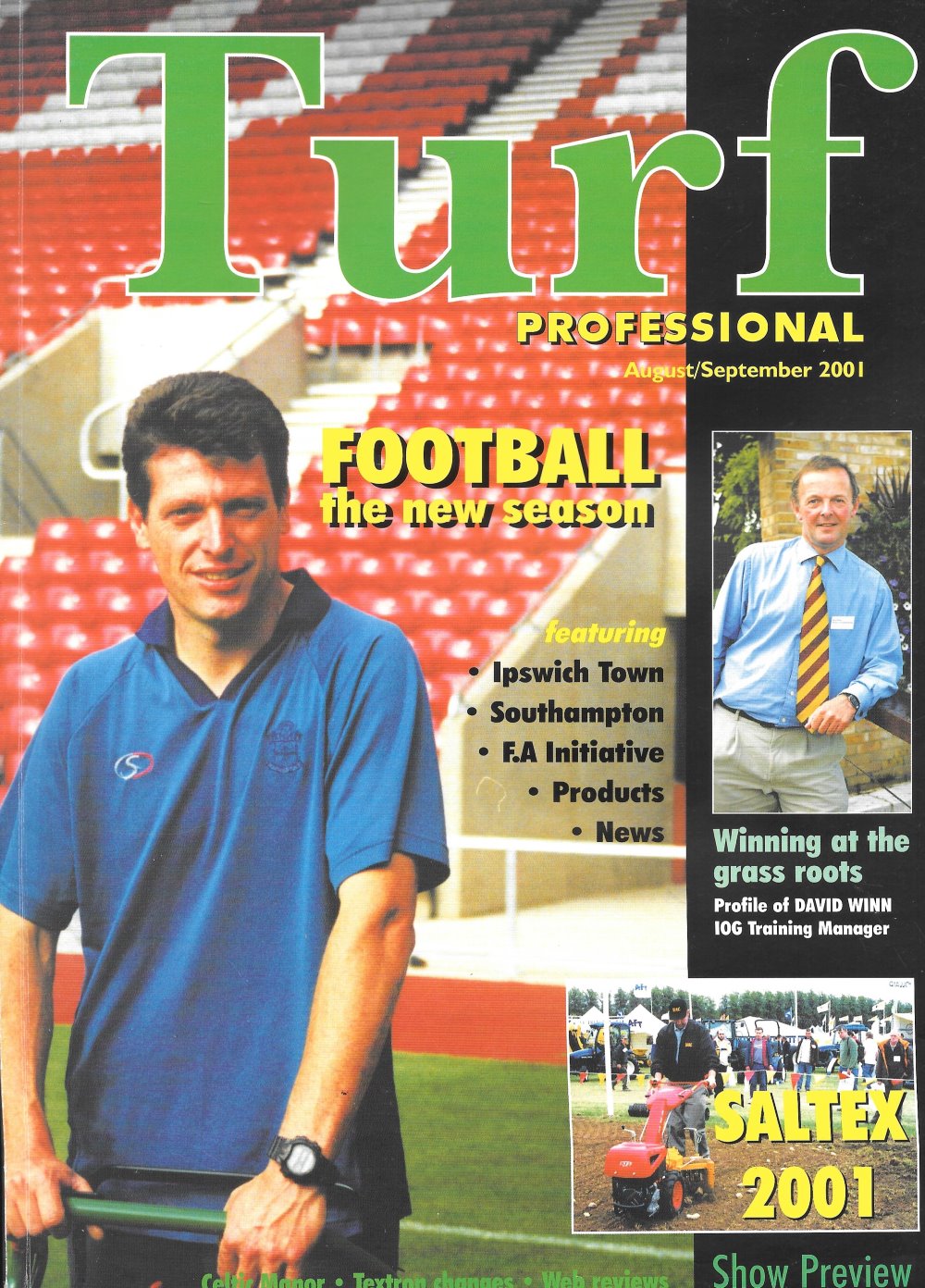 On August 11 2001, over 25,000 people packed into the newly constructed St Mary’s Stadium, Southampton were the Saints were to play their first game, a test fixture against Spanish side Espanyol. It meant that head groundsman Dave Roberts swapping the homely and cramped atmosphere of the Dell which had been its home since 1898 for the wide for a stylish new stadium. The build-up had not been plain sailing. The winter of 2000/2001 had been one of the wettest on record, but construction remained on course, taking just 14 months from the day the bulldozers moved on-site to the opening game at St Marys. On August 11 2001, over 25,000 people packed into the newly constructed St Mary’s Stadium, Southampton were the Saints were to play their first game, a test fixture against Spanish side Espanyol. It meant that head groundsman Dave Roberts swapping the homely and cramped atmosphere of the Dell which had been its home since 1898 for the wide for a stylish new stadium. The build-up had not been plain sailing. The winter of 2000/2001 had been one of the wettest on record, but construction remained on course, taking just 14 months from the day the bulldozers moved on-site to the opening game at St Marys.
2001 IN BRIEF
AFT Trenchers was the subject of a management buy-out from founders Bruce and Rodney Fulford
A new National Code of Practice for operator training was launched at SALTEX by Andy Stewart, chair of the LANTRA trust
Ransomes appointed Brodericks Grass Machinery, based in Dun Loaghaire, to cover the whole of Ireland replacing J E Coulter of Belfast.
IOG Scotsturf attracted over 2500 visitors and 130 exhibitors to its expanded show in Edinburgh.
Pitchcare.com was launched as the brainchild of former Wolves groundsman Dave Saltman.
BIGGA announced that it was to launch The Golf Club Show to run alongside BTME at Harrogate.
In the US, John Deere acquired the Great Dane line of products from Dane Scag
MEN AND MOWERS
Publicity departments of turfcare companies, rarely missed on opportunity to provide the media with pictures of their products being sold into iconic sporting clubs (see Toro above). Below depicts the delivery of another Toro sale, this time to Manchester United. Steve Halley of Cheshire Turf Machinery is seen with Keith Kent (who was to move to Twickenham the following year) with Tony Sinclair in the driving seat.
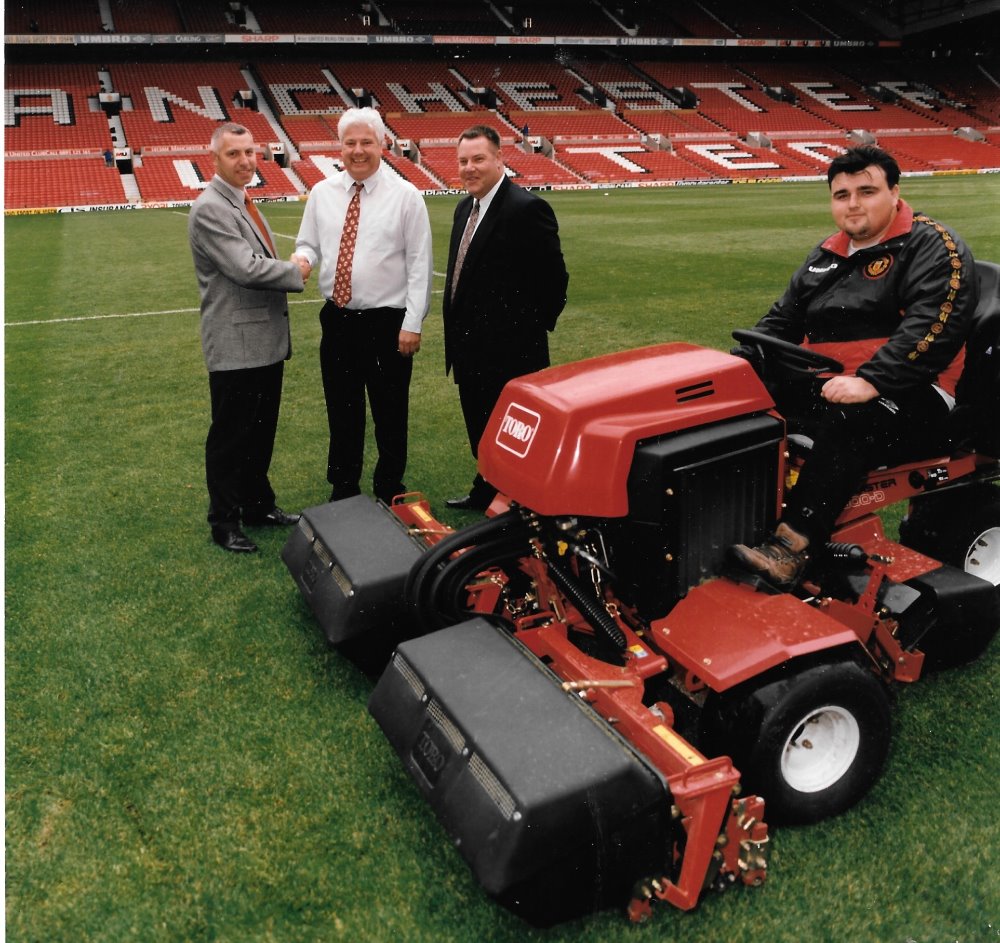
 |
|
 |  |
THE ESSENCE OF ESSENTIAL
Finding a sensible way forward on defining "essential maintenance"
by Noel MacKenzie, principal consultant & director, Sports Turf Consulting
Noel MacKenzie offers his consideration and suggested definition of “essential maintenance” for golf clubs and sports ground facilities during this current crisis.
Following the government guidelines and information from our sports governing bodies, Noel MacKenzie, one of our well known sports turf consultants, offers some of his own advice to help sports clubs and golf courses have a better understanding of what they can do during this crisis.
Noel is principal consultant and director of Sports Turf Consulting, a business he started in 2003. His aim is to provide advice to sports turf facility managers and their owners on the management, maintenance and construction of turf facilities in both the public and private sectors. This includes routine maintenance, agronomy, construction and design & resource management.
Noel has worked for various consultancies including, Gillespies Landscape and Ecology Practice, ADAS, Sports Turf Research Institute (STRI Limited), Grass Science (Division of the RT Group), TurfTrax (TGMS) Limited. - Laurence Gale, TurfPro editor
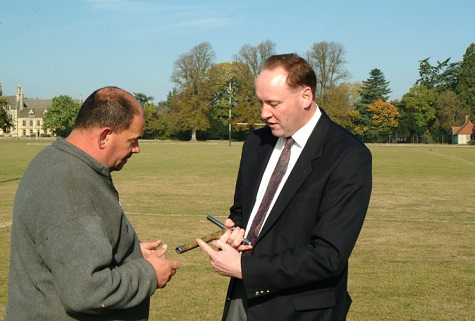
Noel MacKenzie seen right
INTRODUCTION
“Besides the noble art of getting things done, there is the noble art of leaving things undone. The wisdom of life consists in the elimination of non-essentials.” - Lin Yutang
At the time of writing I have been busy amending reports to clients and updating them via email but I wanted to do more for the industry as a whole.
We have learned that the lockdown has been extended and for the last few weeks I have been liaising with clients and contacting industry governing bodies offering support and input on suggested guidelines. The driving rationale on this is that sooner or later lockdown will end and when that happens it is important that the businesses and clubs can become operational again very quickly therefore some maintenance is going to be required. It is anticipated that sports like golf and fishing may be some of the first to face relaxation on social distancing so we need to adopt a “holding pattern” to ensure we, as an industry, are ready for this situation when it arises.
There has been a range of operations going on out on the ground with some venues not really changing operations that much and others shutting down all together. The following is my consideration and suggested definition of “essential maintenance” for golf clubs and sports ground facilities. This has been offered in slightly different ways for input or adoption to Industry member’s organisations (BIGGA and GMA) to help form a universal policy on essential working practices in discussion with sports governing bodies and government departments.
It is stressed that this article is not intended to be an absolute guide to safe working practice around Covid19 and further Government and Health Service sources should be engaged to confirm best practice. What is intended is to serve as a thought provoking read and help develop consensus. Ultimately we need to protect our assets through this period, be it staff or the facilities themselves.
The needs of golf clubs/courses and sports grounds are obviously different, but they also have many similarities, the greatest of which is that the people working on site need protecting and supporting. The people who manage and maintain the sites are an important asset since they hold knowledge and are a valuable resource and it is incumbent on all employers to exercise a duty of care for its workers and follow requirements under the Health and Safety at Work Act 1974 and all subsequent legislation. For those furloughed away it is important that they are not forgotten or that valuable resource may be lost forever and ideally we want them back! Managers should stay in touch during lockdown and possibly consider arranging training or at least communication and engagement at some level. Managers may also need to consider the impact of the Lockdown on psychological health too. This situation of lockdown may continue for some time, probably months, and it is clearly a developing one.
Staff Wellbeing: The Most Important Element
Managers must conduct a Risk Assessment of all staff working practices and behaviours assessing risk of virus transfer and exposure.
Particular measures likely to be necessary are:
- Less work will be required on courses doing only essential work so smaller work teams are likely to be necessary.
- An action plan for a worker becoming sick/injured during work is required. First Aid personnel need to be aware of the new risk.
- Ensure workers maintain social distancing in the work place and always maintain a minimum 2metre distance from each other.
- Ensure staff work independently.
- Where possible individual machines should be allocated to identified workers.
- All machinery operating contact areas will be washed down with detergent based cleaning solution and, if possible, antiviral (not antibacterial) cleaner.
- Walky-talkies/radios are a particular risk and shall be individually assigned and wiped with antiviral cleaner at the beginning and end of shifts. If possible chargers shall be separated and taken to workers homes to avoid cross contamination.
- Staff should wear gloves as far as is possible.
- Communal areas should be closed and staff should bring all the following items in individually:
Work clothing
Food
Drinks
Eating and drinking implements.
- Working entry and exit points where community contact is likely to take place shall be wiped down at the beginning and end of the day and at the beginning and end of all breaks.
- Breaks should be taken in isolation/ deploying social distancing.
- Lone working shall be carefully monitored and staff “check–ins” completed on at least hourly intervals if undertaking any activity alone.
- Toilet areas shall be fully stocked with soap and have hot water available and each user to sanitise the handle and seat and doors and taps on each occasion used.
- Any enclosed areas shall be as well ventilated as possible.
- Tool stations are a risk area and workers will need to sanitise any communally used tools and generally use gloves. Ideally each worker should have their own tools for common use items.
- Footpaths and community access routes through the golf course may place a duty of care to sterilise gate fastenings and erection of Covid19 good practice guidelines.
- Managers will have to take an active role managing workers not leave them to their own devices or engage in other work – management of staff must be their priority.
- Managers may also have to account for mental health anxiety around staff coming to work for a variety of reasons. Workers should not be coerced or pressured into working if they are uncomfortable with the situation.
- All staff must report any symptoms and follow government and Health Service advice if unwell regarding self-isolation and disease control measures.
- All persons should act as if they have and carry the virus, rather than being free from it so the duty is to avoid spreading the illness rather than simply personally avoiding it, thus prevention is also avoidance.
Whilst that covers general working practice to some degree we also need to consider what comprises “Essential Maintenance” for both golf courses and sports grounds. To do so we also need to understand that sports turf facilities cannot endure a “no maintenance” scenario as these are a “living thing” and stopping maintenance is really not a viable option except in the most critical circumstances.
Golf Course Maintenance
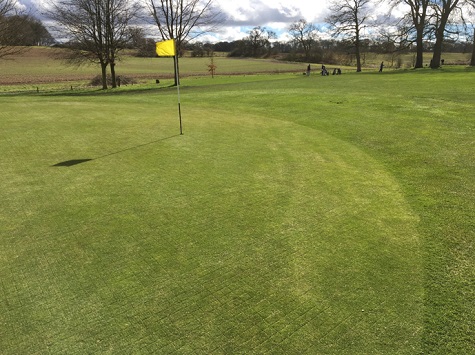
Inevitably all golf courses will take a financial “hit” from the closure to play. In order that golf courses do not fail completely as businesses it is essential they maintain some basic maintenance to sustain their courses in that “holding pattern” so they can be bought back to performance surfaces in future.
Golf courses have to be maintained or they will deteriorate fast and be unable to reopen for months when the lock-down lifts. Indeed, our view is if the course receives no maintenance they will fail as businesses or take months to get back on an operational basis. The “holding pattern” of maintenance at a lesser input level is necessary to:
- Maintain the surface viability of playing areas, especially greens which are highly vulnerable and costly to restore if they fail.
- Cut costs as far as reasonably possible.
- Limit working hours to the absolute minimum (and therefore worker exposure and minimising labour costs).
- Reduce biotic pressure on the grass plants thereby reducing the risk of disease and other problems that cause long term damage.
- Allow courses emerge from a “holding pattern” able to offer compromised playing facilities within two days of Lock Down being lifted.
- Kept in such condition that the businesses are able to provide customer experience of near normal playing conditions within two weeks of Lock Down being lifted.
The following list is the items that we consider to be essential maintenance in order to hold a course in a “holding pattern” for the summer months until around September:
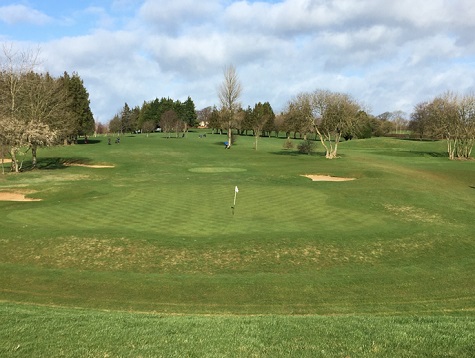
Greens – essential areas
- Mowing - completed at 6-8mm on three occasions per week (also reduce water demand).
- Growth retardant – apply trinexapac-ethyl as per maker’s instructions.
- Verticutting/light scarifiying 2x month to avoid accumulation of pathogen harbouring thatch in the sward and upper rootzone which may lead to disease breakout.
- Rolling (triple mounted)– 1-2 x per month – necessary to maintain surface firmness due to lack of foot and mechanical traffic and essential for maintaining surface smoothness to allow close mowing.
- Sarrel spiking to maintain irrigation efficiency and reduce water wastage.
- Wetting agent application 1 x month – to combat rootzone hydrophobicity and reduce water wastage.
- Fertiliser – site dependent, but some routine spring/summer fertiliser will be needed. As a universal “catch-all” approach maybe a liquid feed urea based (12-20% N content) applied monthly with wetting agent. There is no reason to divert from the normal fertiliser programme if staffing allows and inputs reduced potentially.
- Significant pest/disease management e.g. moles, disease, serious weed infestation, etc. (applies to all areas)
Note: The above list can be reduced further. but this will lead to a reduction in ability to recover greens after lockdown is lifted and may lead to longer term issues and costs accumulating.
Tees/surrounds/semi-rough/quality landscape areas
- Mowing - can be completed one occasion per week at 15-18mm.
- Growth retardant – apply trinexapac-ethyl as per maker’s instructions.
- Fertiliser – controlled release input of around 15-28% nitrogen released over 5-6 months.
Fairways
- Mowing - can be completed at 15-20mm one occasion per week
- Growth retardant – apply trinexapac-ethyl as per maker’s instructions.
Rough/paths and lower importance landscape areas
- Mowing - can be completed one occasion per fortnight at normal cutting height
Essential Maintenance
- Irrigation system spring preparation is essential in our opinion, as are repairs to such systems.
- All machinery must be maintained in a safe, fully functioning condition and be fit for purpose.
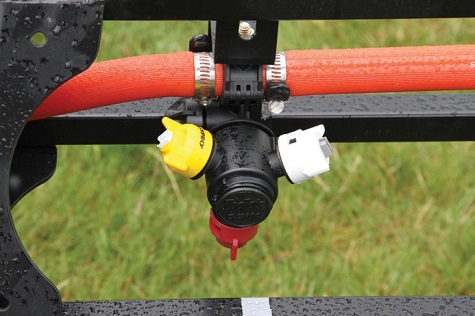
Non- essential works
- All other areas, e.g bunkers, etc., are non-essential unless a significant Health and Safety risk is identified (bearing in mind the course is closed therefore risk exposure must be relevant). Consider areas like ditch maintenance too where blockages could cause wider problems.
- Typical greens maintenance e.g. aeration (except for surface sarrel spiking of greens), topdressing, application of supplements e.g. seaweed, etc., renovations. Practice areas (excluding practice greens), ditches, bunkers, etc., are considered non-essential.
- Spaying is recommended as a labour effective way of undertaking several tasks at once including wetting agent and fertiliser application although this may draw comment since it is a very visible activity. Nevertheless the sprayer is a great way of combining a number of applications at the same time to save time and effort.
- If disease or pest spraying is undertaken PPE involved in pesticide use must be sanitised and/or disposed of after use and, if retained, only used by one operator thereafter.
Sports Ground Maintenance: Bowls, Croquet, Cricket, Tennis, Football, Rugby, Equestrian
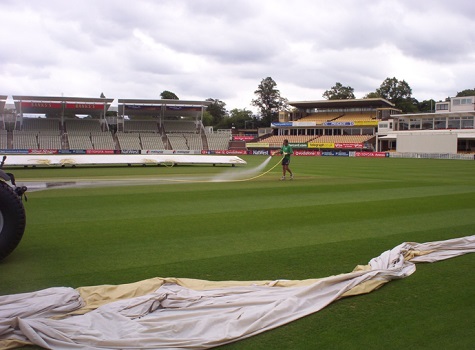
As with Golf it is Inevitable all facilities will take a financial and deterioration “hit” from the closure to play and use. In order that facilities do not fail completely as businesses it is essential they maintain some basic maintenance to sustain their surfaces in a “holding pattern” so they can be bought back to performance surfaces in future. A “holding pattern” of maintenance at a lesser input level is necessary to:
- Maintain the surface viability of playing areas, especially bowling greens, cricket tables & outfields, grass tennis courts, high quality winter sports turf pitches but also lower standard facilities in parks and schools – all of which are highly vulnerable and costly to restore if they fail.
- Avoid long term deterioration of “soil hardness based” sports where thatch presence is highly detrimental to the condition of the surface, this being especially true of cricket, tennis, croquet lawns and bowling greens.
The following lists the items that I consider to be essential maintenance on each type of surface in order to hold a surface in a “holding pattern” (subject to advice from governing bodies):
Bowling Greens and very high standard croquet lawns
- Mowing - at 6-8mm on a maximum of 3 occasions per week (also reduce water demand).
- Growth retardant – apply trinexapac-ethyl as per maker’s instructions.
- Verticutting/light scarifiying 2x month (single pass) to avoid accumulation of pathogen harbouring thatch in the sward and upper rootzone which may lead to disease breakout.
- Sarrel spiking 1 x month to maintain irrigation efficiency and reduce water wastage.
- Wetting agent application 1 x month – to combat rootzone hydrophobicity and reduce water wastage.
- Fertiliser – ideally this should be site dependent. Routine spring/summer fertiliser: ideally a liquid feed urea based (12-20% N content) applied monthly with wetting agent OR a spring/summer minigranular fertiliser e.g. 8-12% Nitrogen applied at 25-35g/m2 would cover many situations.
- Significant pest/disease management e.g. moles, disease, serious weed infestation, etc.
- Irrigation – as little as possible.
Note: The above list can be reduced further, but this will lead to a reduction in ability to recover green after lockdown is lifted and may lead to longer term issues and costs accumulating.
Cricket Tables, Grass Tennis Courts, croquet lawns
- Mowing - can be completed one occasion per week at 12-15mm, clippings removed.
- Growth retardant – apply trinexapac-ethyl as per maker’s instructions.
- Verticutting/light scarifiying 1x month to avoid accumulation of pathogen harbouring thatch in the sward and upper rootzone which may lead to disease breakout.
- Fertiliser – Apply as needed to maintain turf condition and health which is ideally site and surface specific. As a basic recommendation products mentioned for the bowling green (see above) would suffice or use minigranular 11:5:5 spring/summer fertiliser applied at 30-35g/m2.
- Significant pest/disease management e.g. moles, disease, serious weed infestation, etc.
- Irrigation – as little as possible.
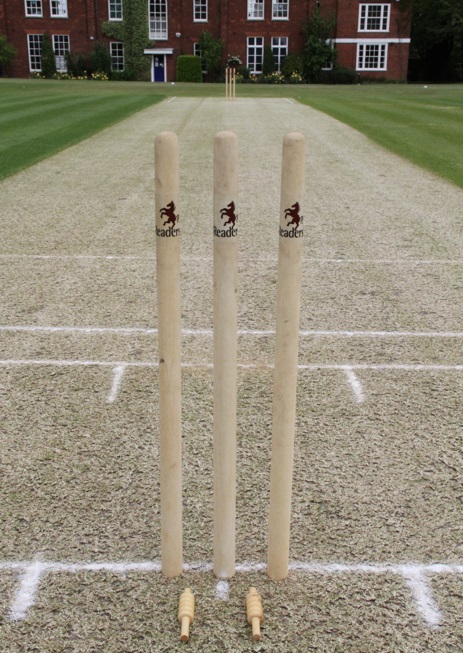
Cricket Outfields, football pitches, rugby pitches, grass hockey pitches, polo pitches, etc.
- Mowing - can be completed at 20-50mm one occasion per week, height dependent on sport.
- Due to the timing of lockdown winter pitches are in need of renovation, but this is unlikely to be possible as a full process. If stocks are already held of grass seed this should be drill seeded into pitches to ensure they are in optimal condition for the start of next playing season. If this is not possible stocks of seed should be placed in a cool, dry environment for use at a later date.
- Growth retardant – apply trinexapac-ethyl as per maker’s instructions (optional).
- Fertiliser – Apply as needed to maintain turf condition and health. This should ideally be site and surface specific. As basic recommendation products mentioned use a 5-6 month controlled release fertiliser between 18-28% nitrogen content e.g. PolyPro/PolyPro SK, Sierrablen, Multigreen, Polyon or similar or use minigranular 12:6:6 spring/summer fertiliser applied at 30-35g/m2. Use of conventional fertiliser may be appropriate but it will be more labour intensive.
- Significant pest/disease management e.g. moles, disease, serious weed infestation, etc.
Race Courses
- These should be maintained approximately as normal with regard to mowing (typically 100mm 4”) and routine thatch management but other treatments are largely unnecessary if there is no use.
- Significant pest/disease management e.g. moles, disease, serious weed infestation, etc.
Essential Maintenance – Site Hardware
- Irrigation system spring preparation is essential in our opinion, as are repairs to such systems. Irrigation is an essential part of the maintenance of fine turf.
- All machinery must be maintained in a safe, fully functioning condition and be fit for purpose.
Non- essential works
- All other areas are non-essential unless a significant Health and Safety risk is identified through risk assessment (bearing in mind the facility is closed therefore risk exposure must be relevant). Consider including landscape areas where long grass may impair vision at a road junction or site entrance for example or ditch maintenance is needed to ensure no blockages in water courses, etc.
- Typical maintenance e.g. aeration, topdressing, application of supplements e.g. seaweed, etc., Practice areas (excluding practice greens), ditches, bunkers, etc., are considered non-essential.
- Spaying is recommended as a labour effective way of undertaking several tasks at once including wetting agent and fertiliser application although this may draw comment since it is a very visible activity.
- If disease or pest spraying is undertaken PPE involved in pesticide use must be sanitised and/or disposed of after use and, if retained, only used by one operator thereafter.
Summary
Please remember this is not “official advice” but an indication of the information offered to assist organisations in to form policy guidance on what is reasonable “essential maintenance".
It is stressed that it has been compiled with the best information the author has available and this is not an absolute guide to safe working practice around Covid19 therefore further Government and Health Service, Industry bodies and Sport’s governing bodies sources should be engaged with to confirm best practice.
Noel R.K. MacKenzie B.Sc.(Hons), MBPR, RIPTA
Director and Principal Consultant
Sports Turf Consulting Ltd
Tel: +44 (0)7739 505862
Email: info@sportsturfconsulting.co.uk
Web: www.sportsturfconsulting.com
 |
|
|
|